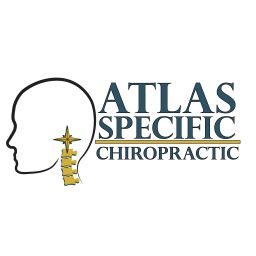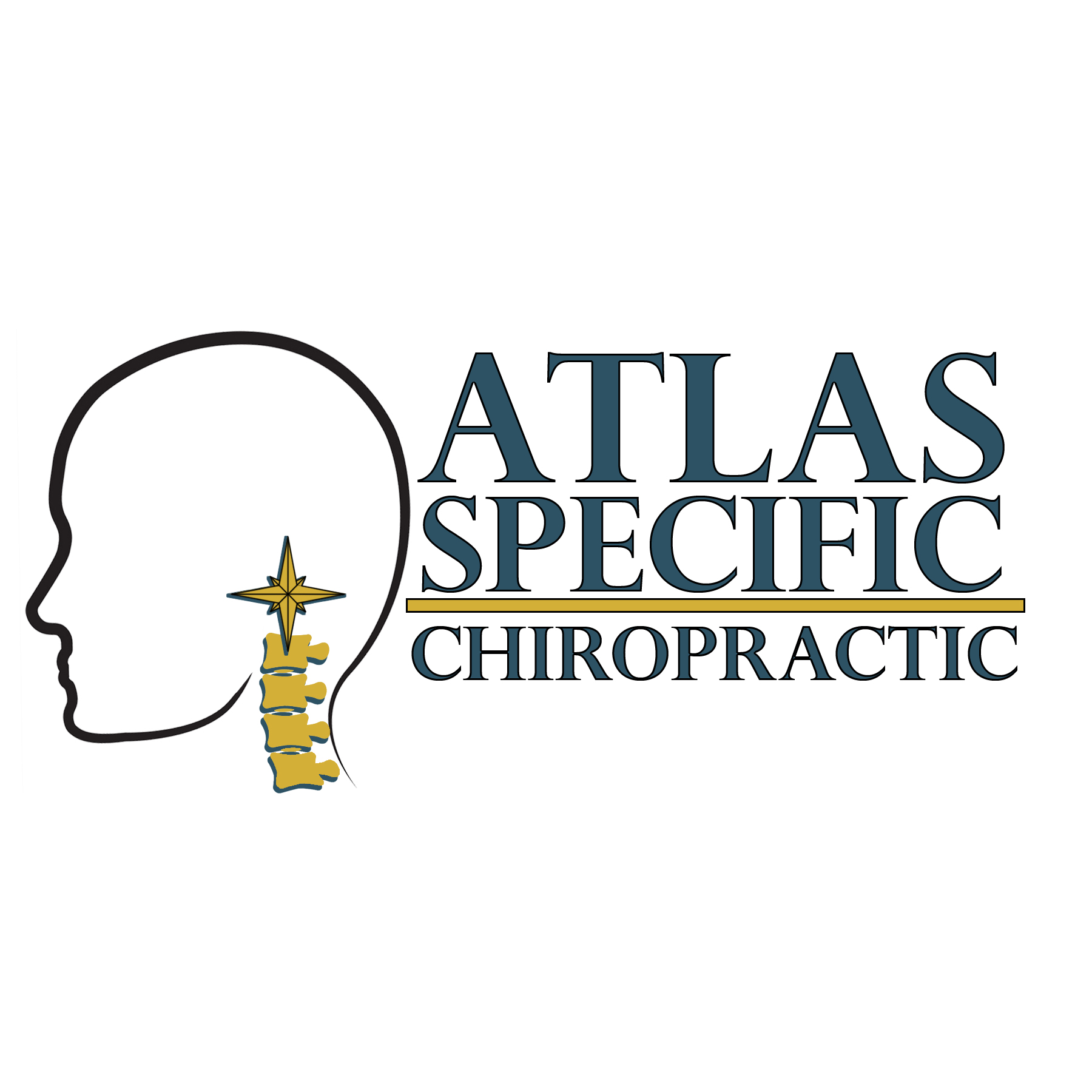
Advanced HIO Knee Chest Technique (AHKC)
The Most Precise Upper Cervical Adjustment We Use at Atlas Specific Chiropractic
At Atlas Specific Chiropractic, our doctors use a highly specialized upper cervical method called the Advanced HIO Knee Chest Technique (AHKC). This is the primary way we correct the atlas (C1) and axis (C2)—the top two bones in the neck that protect the brainstem and influence the entire nervous system.
AHKC was developed from BJ Palmer’s original knee-chest upper cervical work and further refined with modern imaging, precise angle measurements, and a specialized adjusting table (S-Angle table).
The goal is simple:
Correct the exact misalignment, with the least amount of force, to create the greatest change in your nervous system.
What Is the Advanced HIO Knee Chest Technique?
AHKC stands for Advanced Hole-In-One Knee Chest Upper Cervical.
-“Hole-In-One” refers to delivering one specific, accurate adjustment to the upper cervical spine, rather than many general adjustments throughout the spine.
-“Knee Chest” refers to the position you’re in during the adjustment—kneeling on a padded table with your chest supported.
-“Upper Cervical” means the correction is focused on C1 and C2, which sit directly under the skull and surround the brainstem.
This technique is known internationally as one of the most precise and gentle forms of upper cervical chiropractic care, designed to reduce interference at the brainstem and restore normal communication between the brain and body.
Why the Upper Cervical Spine Matters
The atlas and axis are different from every other bone in the spine:
-They hold up the head and allow most of your neck movement.
-They protect the brainstem, which controls breathing, heart rate, balance, digestion, sleep, and more.
-Small misalignments here can change posture, blood flow, cerebrospinal fluid (CSF) movement, and nerve signals throughout the body.
When this area is out of alignment, it can contribute to problems like:
-Headaches & migraines
-Vertigo & dizziness
-Neck pain & stiffness
-TMJ/jaw pain
-Tinnitus & ear fullness
-Trigeminal neuralgia
-Fibromyalgia & chronic pain
-Post-concussion symptoms
-Neurological and autonomic issues
AHKC is designed to correct this area with extreme specificity, so the body can begin to heal and regulate itself better.
How the AHKC Technique Works (Step by Step)
1. Detailed Analysis and Imaging
Before any adjustment, we perform:
-A thorough history and exam
-Functional neurological scans (Tytron thermography) to assess nerve irritation along the spine
-Three specialized X-ray views of the upper cervical spine, measured to the 1/100th of a degree and millimeter, to determine your exact misalignment pattern
This level of analysis is what makes upper cervical care—and AHKC—so different from standard chiropractic.
2. The Knee-Chest Position
During the adjustment:
-You kneel comfortably on a padded knee-chest table.
-Your chest and shoulders rest on a cushioned support.
-Your head is placed in a very specific position and angle, based on your X-ray measurements.
This position allows the doctor to contact the exact point on the atlas or axis with precision, while your body is fully supported and relaxed.
3. A Gentle, Specific Correction
Using a quick but controlled hand contact, the doctor delivers a small, focused adjustment to the upper cervical spine:
-There is no twisting or yanking of the neck.
-There is no “cracking” or gross manipulation.
-The force is directed along the exact angle calculated from your imaging, using the leverage of the table and body position to minimize effort and maximize precision.
Many patients describe it as a light “tap” or quick impulse more than a forceful adjustment.
4. Resting and Re-Checking
After the adjustment, patients rest in a quiet resting suite to allow the body to adapt and “set” the correction.
We then recheck:
-Your neurological scan findings
-Leg reflexes and balance
-Tender points and range of motion
If the correction is holding, we don’t adjust again.
In AHKC, holding the correction is more important than getting adjusted often.
What Makes AHKC Different From Regular Chiropractic?
Compared with typical chiropractic care, AHKC is:
-More specific – One exact correction based on detailed measurements, not the same routine for everyone.
-More gentle – No twisting, cracking, or forceful rotation; ideal for sensitive neurological cases, seniors, kids, and post-trauma.
-More brainstem-focused – Designed to reduce pressure and irritation where the brain and spinal cord meet.
-Measured and reproducible – The same angles and lines can be used over time to ensure consistent, predictable corrections.
Only a relatively small number of chiropractors worldwide are trained and certified in Advanced HIO Knee Chest, which is why people often travel long distances for this type of care.
Conditions Commonly Helped with AHKC
Patients seek AHKC care for a wide range of problems, especially when other methods have not helped. Offices using AHKC report improvements in:
-Headaches and migraines
-Vertigo and cervicogenic dizziness
-Neck pain and whiplash injuries
-TMJ and jaw pain
-Trigeminal neuralgia and facial pain
-Tinnitus and ear fullness
-Post-concussion syndrome
-POTS and dysautonomia (supportive care)
-Fibromyalgia and chronic pain
-Numbness, tingling, and nerve irritation
AHKC does not claim to cure specific diseases.
Instead, by reducing upper cervical interference, the nervous system can function more clearly—often resulting in better symptom control and improved quality of life.
AHKC at Atlas Specific Chiropractic
At Atlas Specific Chiropractic in Hiawatha, Iowa, the AHKC technique is fully integrated into your care:
-Exclusive focus on upper cervical corrections
-Advanced imaging and thermographic scans before and during care
-Personalized care plans based on your history, findings, and goals
-Option to combine AHKC with Hyperbaric Oxygen Therapy (HBOT) to further support brain and tissue healing in certain cases
We regularly see patients from Cedar Rapids, Marion, Iowa City, the I-380 corridor, the Cedar Valley, and across Eastern and Southeast Iowa who travel specifically because they are looking for this level of precision and specialization.
Is Advanced HIO Knee Chest Right for You?
You may be a good candidate for AHKC if you:
-Have chronic headaches, vertigo, neck pain, or neurological symptoms
-Have tried traditional chiropractic, physical therapy, or medications with limited results
-Have a history of concussion, whiplash, car accidents, or sports injuries
-Prefer a gentle, non-twisting approach focused on the root cause
-Want measurable, objective testing—not guesswork
The best way to know is to schedule an initial evaluation.
Take the Next Step
If you’re tired of chasing symptoms and are ready for a precise, brain-based approach to your spine and nervous system, the Advanced HIO Knee Chest Technique may be what you’ve been looking for.
📞 Call (319) 343-8540 or schedule your first visit at Atlas Specific Chiropractic in Hiawatha, IA.
We’ll walk you through the process, review your findings in detail, and help you decide if AHKC is the right fit for your health goals.
Open Hours
Monday, Tuesday, Thursday
9:00 - 6:00
Wednesday
12:00 - 6:00
friday
9.00 - 2.00
© Atlas Specific Chiropractic | Powered by Webflow.




